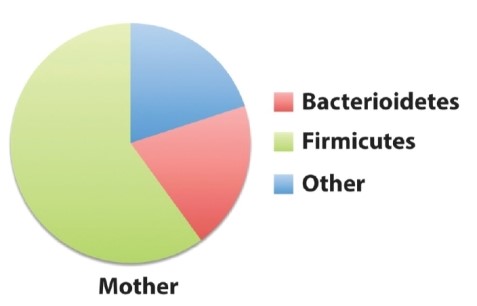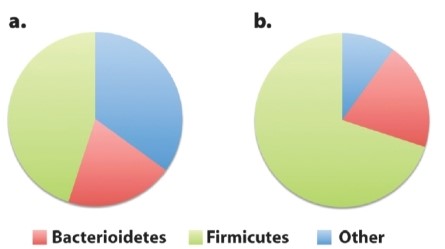Nodules found on the roots of leguminous plants like soybeans harbor bacteria that fix nitrogen. These nodules are an example of the intimate and specialized partnerships that have been established over time between prokaryotes and eukaryotes. Coevolution maintains these types of relationships since both participants benefit. Plants receive biologically useful forms of nitrogen needed for growth, and the bacteria reside in an oxygen-free environment required by enzymes involved in the nitrogen-fixing process. Humans also maintain intimate associations with beneficial bacteria and even archaea! In fact, the prokaryotic cells in and on human bodies outnumber the eukaryotic human cells by tenfold according to some estimates. These microbial inhabitants help humans digest food, provide essential vitamins absorbed by the intestines, and even impact the immune system.  The microbes that coevolve with plants arrive by infection of root tissue. The microbiota that coevolve with humans colonize human tissues after birth. Below is a chart showing the distribution of the gut microbiota in a human female.
The microbes that coevolve with plants arrive by infection of root tissue. The microbiota that coevolve with humans colonize human tissues after birth. Below is a chart showing the distribution of the gut microbiota in a human female.
Panels (a) and (b) below depict two scenarios for the distribution of the gut microbiota in her son. The son maintains a similar diet in both scenarios and has not undergone recent antibiotic treatment (which would decimate and/or alter the entire gut community) . Which of the two scenarios supports the hypothesis that microbiota in the son arrive by infection? Which suggests the microbiota are inherited by offspring? 
A) Panel a supports infection and panel b support inheritance.
B) Panel a supports inheritance and panel b supports infection.
C) Neither scenario suggests inheritance.
Correct Answer:
Verified
Q136: It is commonly thought that life originated
Q137: Recent evidence suggests that deep-sea waters (approximately
Q138: Molecular phylogenies can be reconstructed for both
Q139: Phylogenies can be generated from molecular sequence
Q140: Recall that the Archaea are commonly characterized
Q142: A high school student in Nepal is
Q143: It has been suggested that cyanobacteria are
Q144: The Department of Energy is very interested
Q145: The NASA rover Opportunity identified ancient sedimentary
Q146: Humans provide ecological niches for bacterial populations.
Unlock this Answer For Free Now!
View this answer and more for free by performing one of the following actions

Scan the QR code to install the App and get 2 free unlocks

Unlock quizzes for free by uploading documents